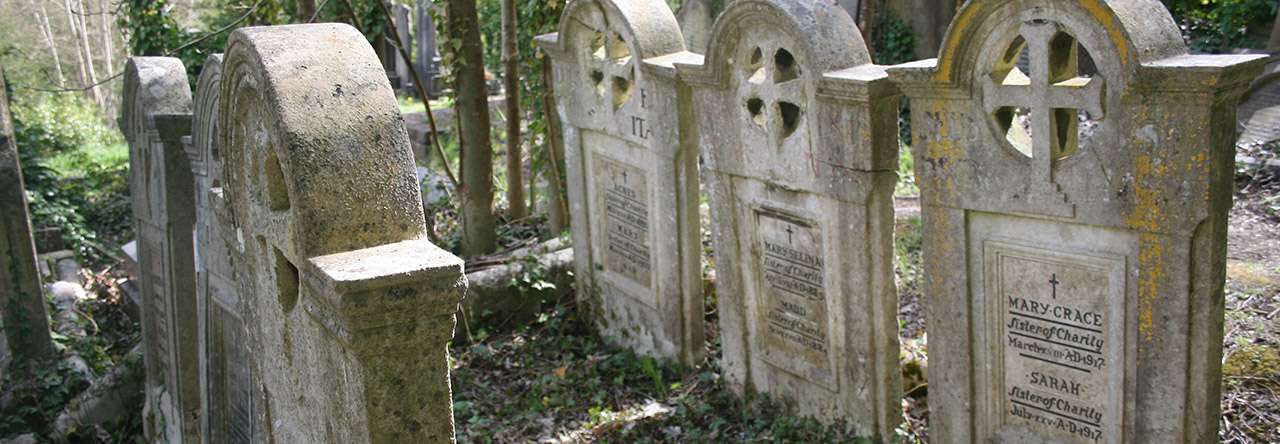The promise of “an immersive theatrical event” lured me to The Mill at Sonning. The theatre’s Waterwheel Bar had been transformed into the refreshment room at Milford Junction in 1936, and as we finished our supper at a table in the bar we witnessed the first encounter between Laura and Alec in Noel Coward’s Still Life. After he had removed the grit from her eye they occupied the next table and their repressed romance took its course with a magnificent supporting cast of steam train effects, Banbury cakes dropped on the floor and returned to their plate on the buffet counter, and curling cheese sandwiches on sliced white, the latter carefully preserved under clingfilm at the end of the evening for future use. It was an unforgettable piece of theatre.
Before this I had been more familiar with Brief Encounter, David Lean’s 1945 adaptation of the play with Celia Johnson and Trevor Howard. Of all the wonderful black and white films of the forties it is the one I love most. It engenders nostalgia with steam trains, the station buffet, Boots circulating library, the Kardomah coffee house, a service flat, Laura’s tailored suits, Alec’s trilby and a phone call made from the tobacconist, all wrapped up in the swelling Rachmaninov score, the swirling fog, and the pent-up passion. Ultimately of course Nothing Happens, and it is hard today not to smile at the cut glass accents and the stultifying morality as the deeply conventional middle-class housewife and the married doctor battle with their intense emotions before parting, he to a new life in S. Africa, she to her home and husband. Alan Bennett satirised the film affectionately in The History Boys where Posner and Scripps in one of the most delightful scenes in the play re-enact an emotionally charged exchange between Laura and her husband, Fred.
And yet…while others finding themselves in north Lancashire may head for the Lake District, my own footsteps always tend towards Carnforth. For Carnforth is the real-life Milford Junction on whose platforms David Lean shot his film when it was impossible to film night scenes around London because of the blackout. And Carnforth celebrates the association: in summer months flowers blossom extravagantly amongst the vintage suitcases and trunks which decorate the platform along with railway posters and porters’ trolleys beneath the famous clock. The refreshment room serves tea and Brief Encounter Cakes, and the railway museum offers a mini-cinema with tip-up seats showing the film on a loop.
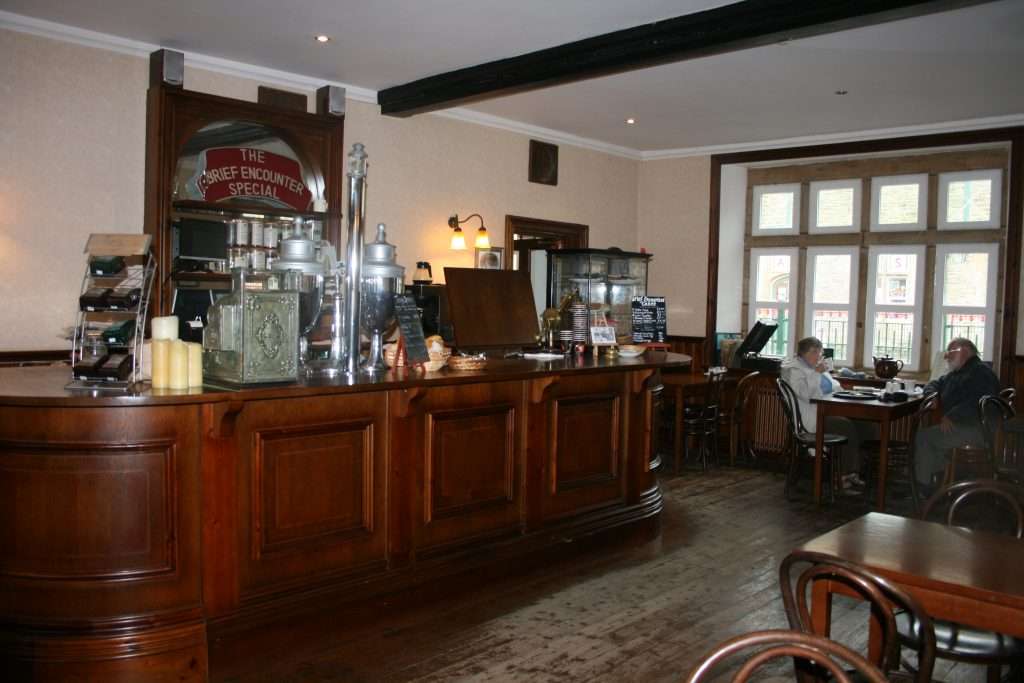
Such is the seductive power of the film that I can barely distinguish between Laura and Celia, Alec and Trevor. So, when I found Celia Johnson’s grave in the trim churchyard of St. Bartholomew’s, Nettlebed, in the heart of rural Oxfordshire, next to that of her husband, Peter Fleming, and surrounded by older headstones, many commemorating other members of the Fleming family, I was not at all surprised. It was just where I would have expected to find Laura. Her Wikipedia entry records that after the war Celia Johnson focused on family life, just as Laura did, and died after collapsing with a stroke while playing bridge – just how Laura would have gone. And Nettlebed itself, quaint, sleepy, and manicured, a village so ridiculously pretty with its handsome houses, thatched cottages, and charming gardens that it regularly stars in Midsomer Murders, is just where Laura would have lived.
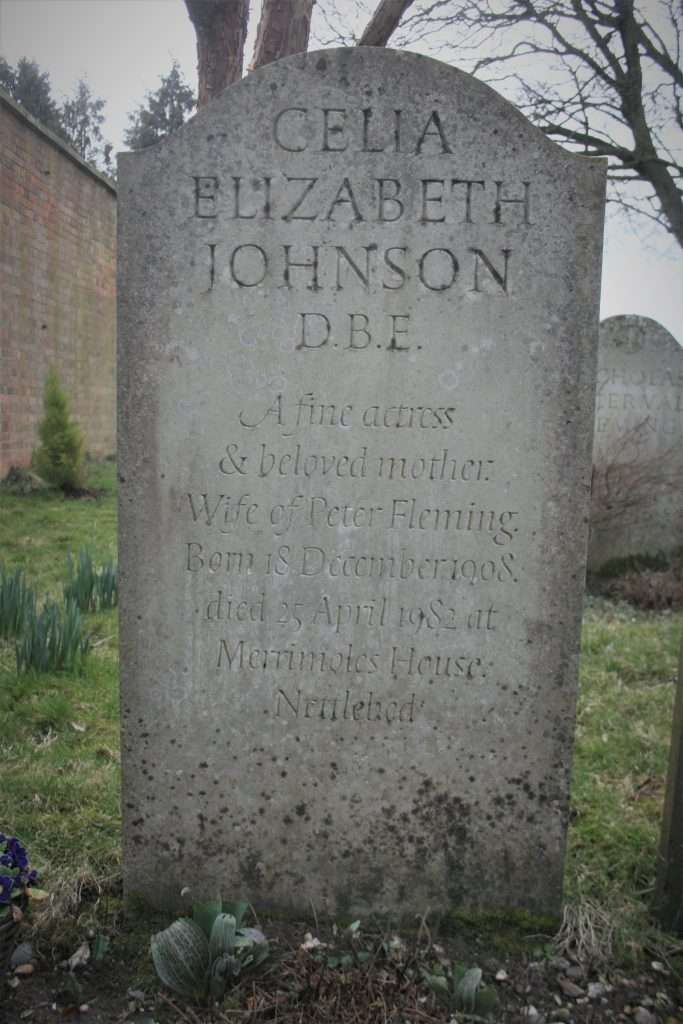
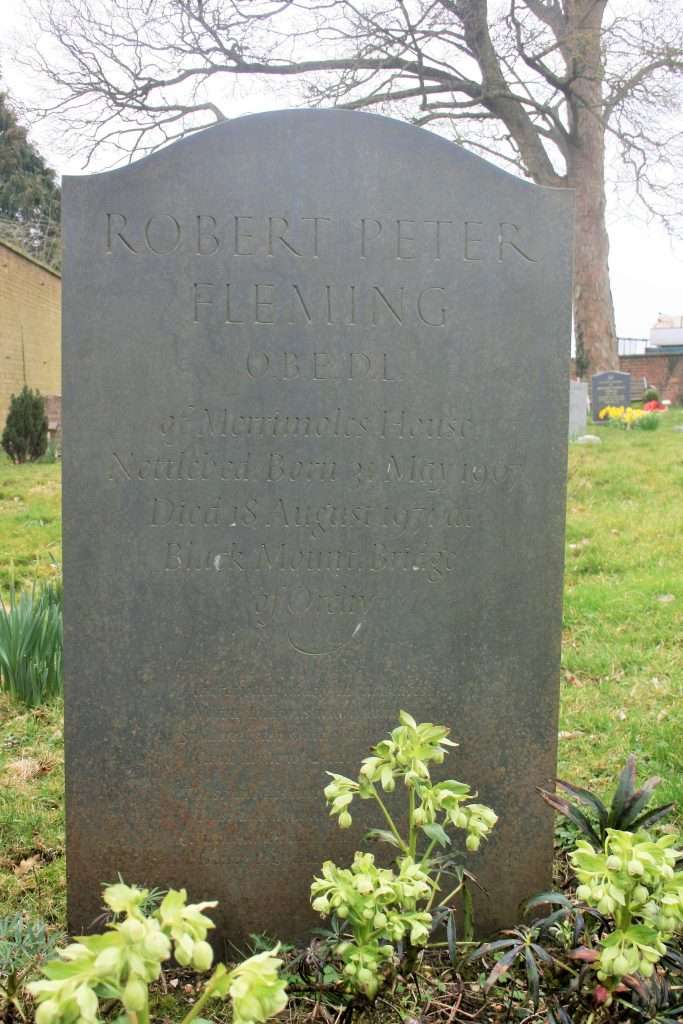
To find Trevor Howard/Dr. Alec Harvey then I should have boarded a Union Castle liner from Southampton, or at least a BOAC aeroplane from Croydon stopping to refuel every few hundred miles, to S. Africa. There I should have found him in some dusty, neglected graveyard outside Johannesburg, beneath a stone extolling the compassion and selfless dedication of a caring doctor. The reality was a little different: I travelled to the end of the Northern Line at High Barnet and after negotiating the roadworks, caught the number 107 bus to Arkley. There behind the austere, brick, Victorian church of St. Peter I located a few stone slabs resting against the wall bearing stark lists of those interred. But no graveyard ever disappoints for long, and beside the stone bearing Trevor Howard’s name there was a card with red roses from Helen and Sofie. The ink a little smudged by the rain despite a careful plastic covering, it read,
Dearest Trevor,
Thank you so much for all the happiness
you have brought to us with your
excellent performances.
One of the greatest actors that ever lived.
Thinking of you with lots of love.
xxx Helen and Sofie xxx
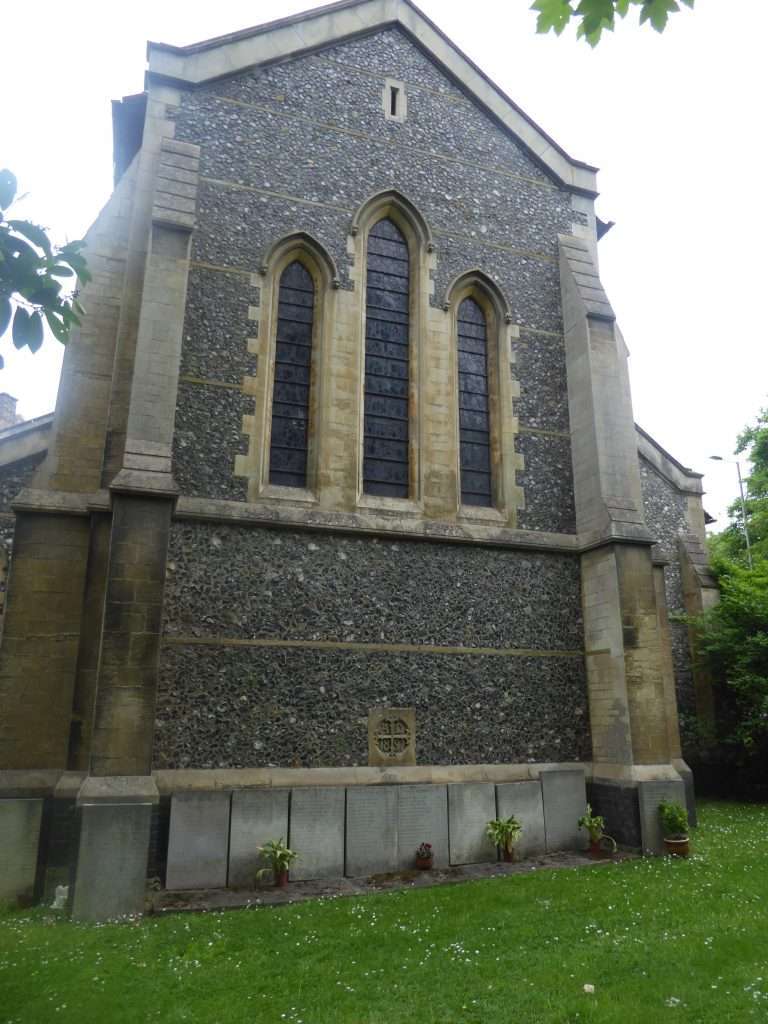
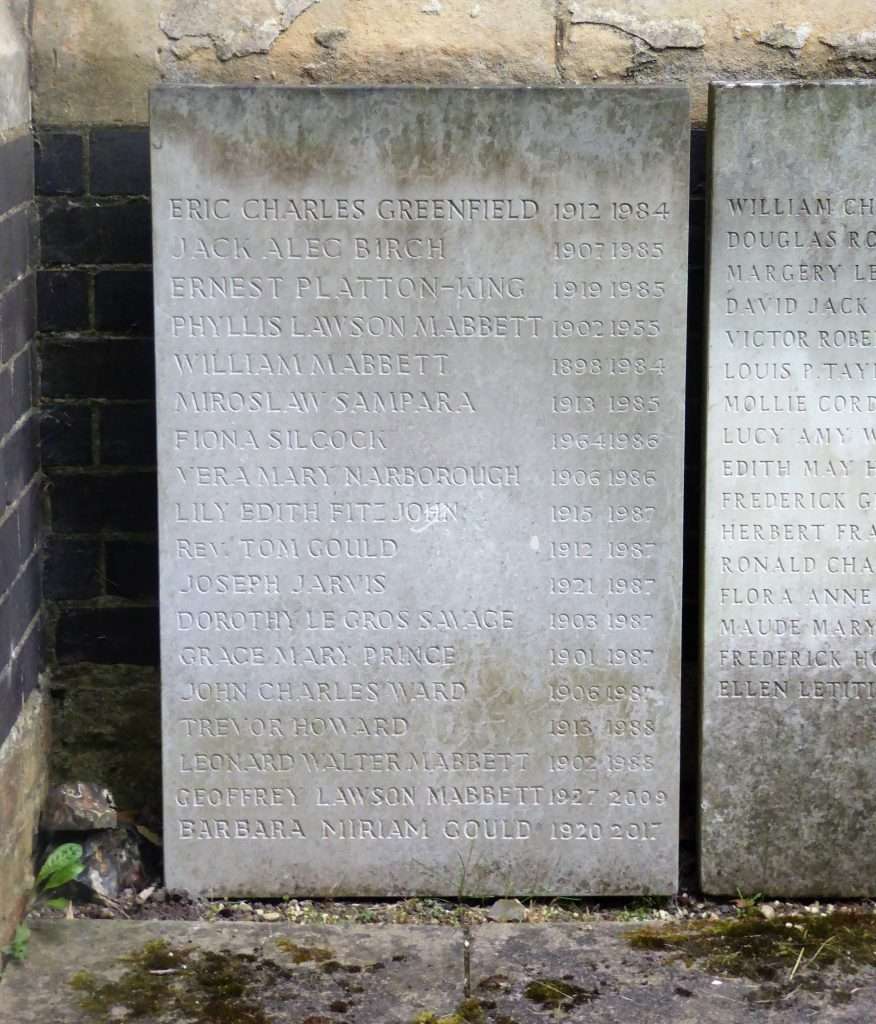

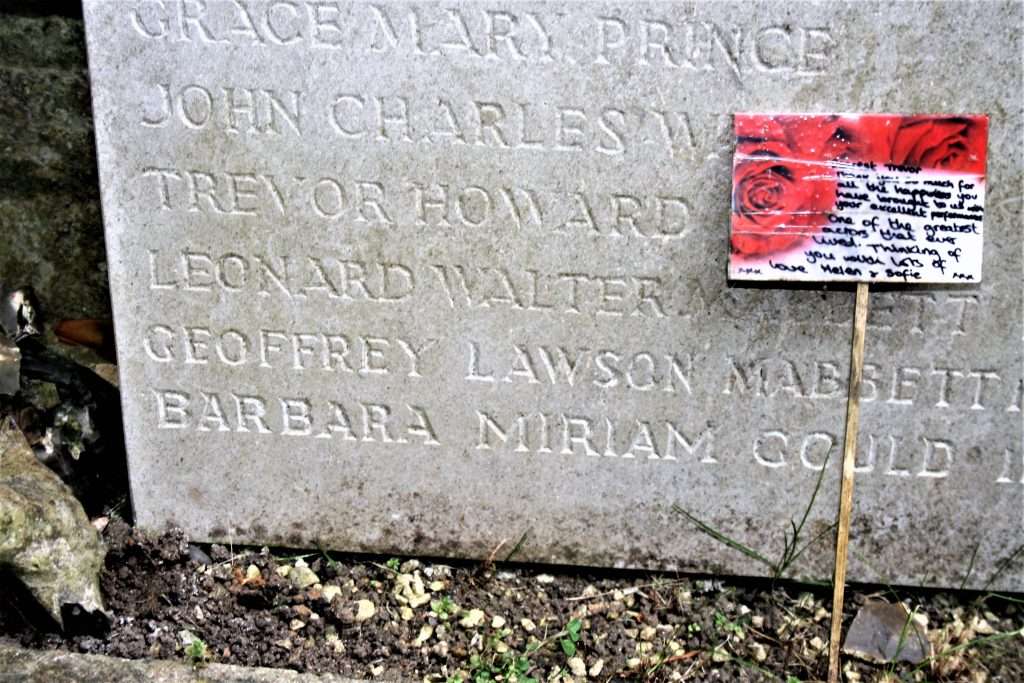
I would have travelled the length of the Northern line a hundred times for the pleasure of meeting Helen and Sofie. I imagine them on a raw winter’s evening, drawing the curtains against the damp, grey nightfall, settling down on the sofa with a glass of red, and selecting a DVD starring their favourite actor. And when the choice falls on Brief Encounter, I’ll join them in raising a glass to Trevor and Celia.
